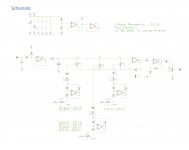Last year, after building up my second XRK971 Pocket Class A amplifier board, I did some extensive output cap rolling in a quest to find the best-sounding electrolytic caps for coupling the amp to my 50 ohm headphones. I was surprised at just how different the various caps sound in the signal path.
Some of this was posted in the Pocket Class A forum and some on Head-Fi. Now I'm rounding it all up in one place with the hope that it might be useful to somebody. No, these weren't blind tests. You don't have to believe my ears. Try testing for yourself and see if you agree!
The majority of my listening tests were performed through ATH-M50 headphones, which I have found to be invaluable for giving an honest rendering of sonic differences. These findings were confirmed through further comparisons using my Sennheiser HD598. I also auditioned the caps while using the Pocket Class A as a preamplifier to feed two different Class D-powered nearfield speaker systems. Sources were a wide variety of FLAC files played both from my XDuoo X3 DAP and my ECHO Audiofire soundcard.
This test was intended to compare caps of similar physical size that would fit into the available space on my PCB for this particular build
. This turned out to be 10x20mm, though a few (marked with asterisks) were 12.5x20mm, and then the OSCONS are smaller than all the rest. I believe that controlling for size vs. specs likely reduces the accuracy of
some of my comparisons somewhat, since
voltage and capacitance ratings varied between caps tested.
Voltage rating varied from 16V to 25V. Theoretically a cap rated for higher voltage exhibits less distortion, per Cyril Bateman. I tested some types at multiple ratings and found that in reality, this effect was difficult to hear. Different capacitor brands and series had much more audible effect than different voltage ratings.
Capacitance varied from 220uF to 1000uF. Of course, this affects the low corner frequency. All of these caps provided satisfying bass quantity...in truth even a -3dB rolloff at 15Hz is only noticeable with critical listening comparisons. This chart shows predicted bass response of each cap value with my headphones...both pairs are 50 Ohms, and in parallel with the amp's 1K load resistor, the total load is 47.6R.
Here are my listening impressions:
Nichicon KW
value tested: 25V 1000uF
Reasonably pleasant, but the treble is quite dulled. Nicely engaging, slightly grainy mids. Bass extends low but is a little uncontrolled and surprisingly quiet for a 1000uF cap. Subpar detail and dynamics.
Nicicon FW
value tested: 25V 1000uF
Brighter than KW. More balanced mids sit on par with the rest of the spectrum. Clearer treble, with some sparkle, but still lacking air up top--stuffy. Good presence in mids, with just the right amount of bite. Bass quantity is better than KW but a bit distorted.
Nichicon Fine Gold FG
values tested:16V 470uF and 25V 330uF
A small step closer to KZ sound in resolution and overall engagement. Smoother than KW or FW, with a balanced frequency response. Deep, punchy and controlled bass. Still a bit "closed in" due to being a bit short on high treble. These can sound strained in louder passages. The 25V may be a hair smoother, with a little more treble, but not enough to avoid a similarly small, stuffy soundstage. Where is the high treble, Nichicon? In the KZ only, I guess. Sheesh.
Nichicon KA
values tested: 25V 470uF and 25V 1000uF
The KA actually stands out from the typical Nichicon "house sound" IMO. It has a slightly mid-centric signature with enough treble to sparkle some, though the treble is a tad hot. Midrange and vocals come forward in the mix nicely, but without grain--they are the smoother than even the FG. Bass has decent weight and control. Somehow I find the KA more natural in timbre than all the other Nichicons. The sound is clearer, though not particularly airy or exciting.
Panasonic FR
value tested: 25V 1000uF and 25V 1500uF*
FAR more neutral and revealing than all of these Nichicons. Maybe its the ultra low ESR…it just gets out of the way and lets the music come through. It gives the cleanest and most spacious presentation, with excellent detail and real air on top for a beautifully open soundstage. The bass is awesomely powerful with deeper extension than any of the Nichicons, and tight control. Blackest background. Fastest transients. Need I say more? If I had to nitpick, I'd wish for a touch more warmth and presence in the mids, but I suppose that might just be a coloration that suits my taste. These caps simply sound REALISTIC.
Panasonic OSCON
values tested: 25V 390uF and 16V 1000uF
I found these to be extremely well balanced thorough the frequency range, with excellent bass weight and particularly great bass control. The bass is just effortless. Overall these have a full, warm and creamy sound signature. But it has a soft/dull one-dimensionality to my ears, and fails to engage me. These fall short on detail compared to all other caps I have tried.
Elna Cerafine
values tested: 16V 330uF, 25V 220uF, 25V 470uF*
I can see why a few people like these more than Silmics. They have more midrange forwardness and bite to them, and at first blush seem to offer a more engaging sound. However, their treble can be a little harsh after a while, and the response is rather poorly extended on both extremes of the frequency spectrum, resulting in a less detailed, somewhat boomy and congested sound, with noticeably less bass control than the Silmic. Not my cup of tea.
Elna Silmic II
value tested: 16V 220uF
Bass has flawless texture, speed, and extension, even with a marginally undersized 220uF cap. A polite, soft midrange and treble makes you want to crank the volume, and the overall sound is nice and full. It hides the flaws of harsh recordings, but also seems to push vocals farther away and hide some harmonic texture, resulting in an odd hollowness in midrange timbre. I'd say these sound spacious due to decent extension and a somewhat exaggerated treble sparkle, but the high treble is missing. I particularly dislike the way these do metal percussion. Cymbals and hi-hats do not sound realistically metallic. Other than that, these sound great, if slightly veiled in parts of the spectrum.
Nichicon Muse KZ
value tested: 25V 330uF*
Nice. These are quite detailed, with a beautiful, jangly midrange and sparkly treble that gives an incisive "electric" sound to the upper ranges. Vocals really jump out and grab my attention so that song lyrics have excellent intelligibility. The overall presentation is ever so slightly on the hot/forward side of neutral, with a hint of upper mid harshness, but the overall timbre is natural, with enough treble to give an open soundstage. Metal strings and percussion sound right. This size gives impactful, fast, and detailed bass with my 50R cans. With these, I never feel like I'm missing any detail whatsoever, and I wouldn't say the soundstage is huge, but certainly bigger than either Elna. They're lightning fast, and darn revealing.
------------------
Conclusion
After all this, I now believe that NO electrolytic cap on the face of the planet is
totally transparent in the signal path. My favorite in this application turned out to be the Panasonic FR, and I believe these to be the
most transparent of the bunch, although I can absolutely understand how others might prefer the other "flavors"--particularly the KZ and Silmic, which each have their strong points and are justifiably loved by many.
Conspicuously missing from this lineup is the Nichicon Muse Bipolar BP and the Panasonic FC. I have heard good reports about both and hope to test them eventually.
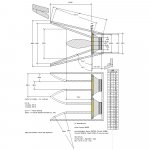
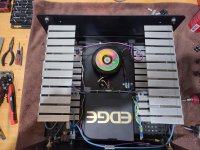
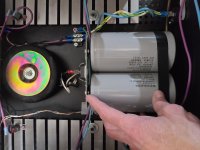
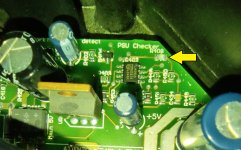


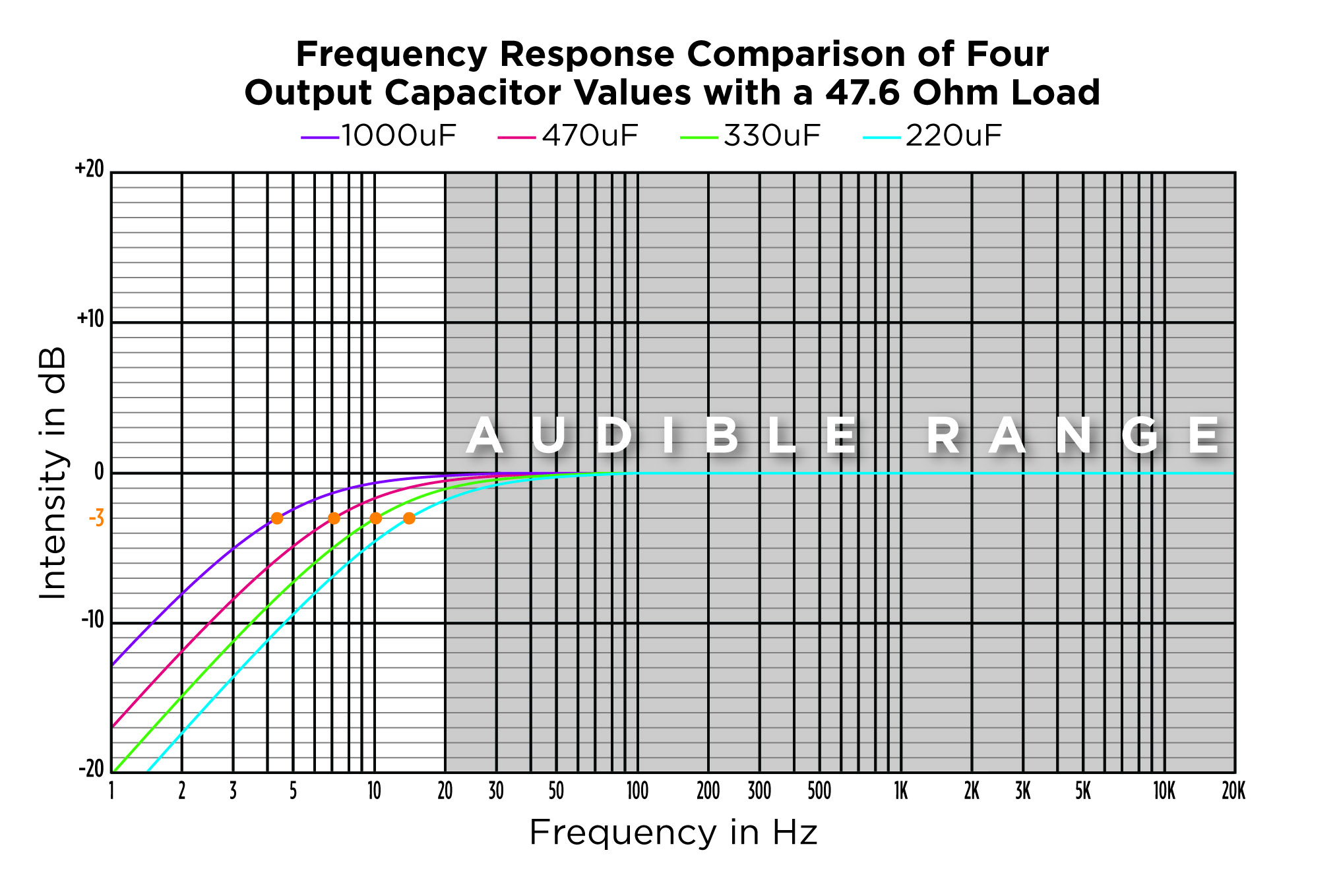

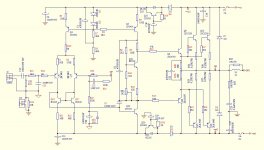

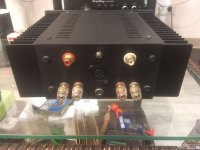
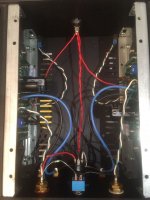
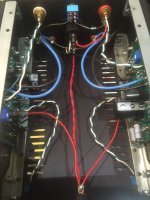
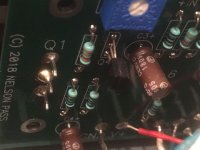
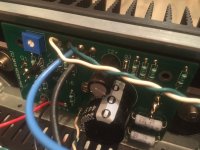

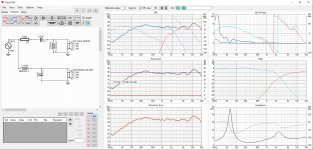
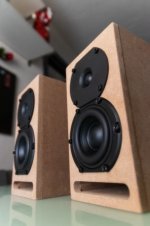
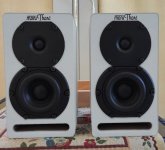
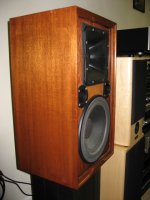
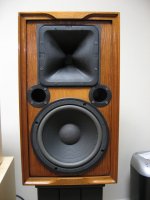
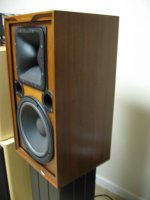

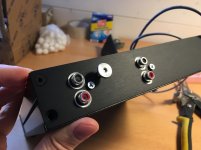
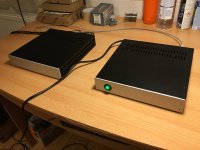
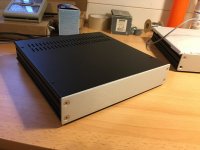
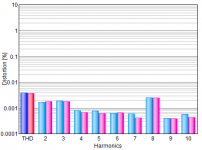
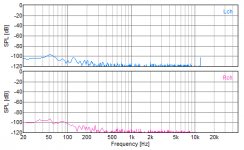
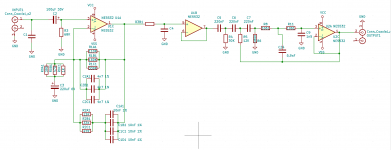
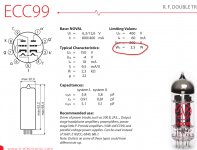
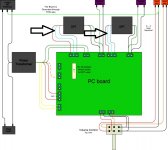
 ). It was designed for electric instruments, but you want to use it with a low impedance (line level) source.
). It was designed for electric instruments, but you want to use it with a low impedance (line level) source. 